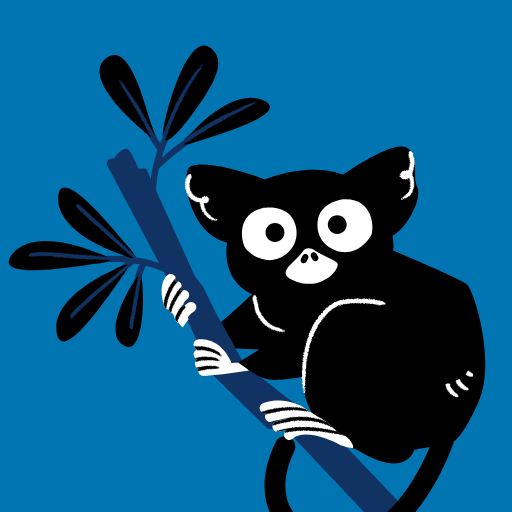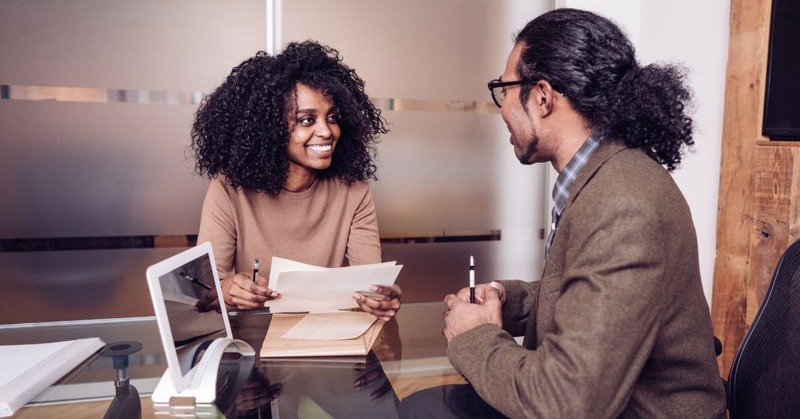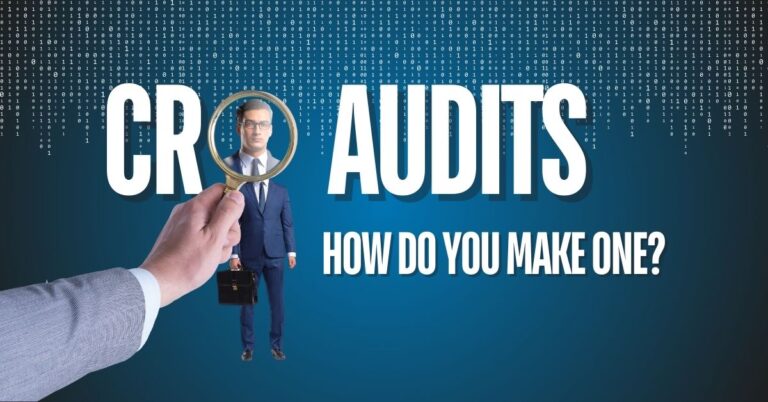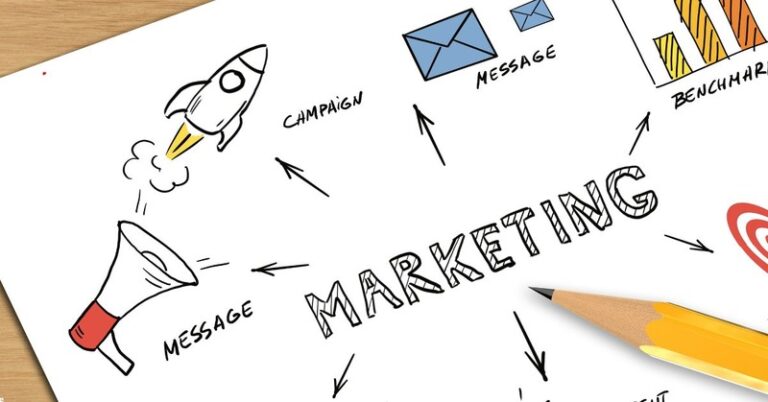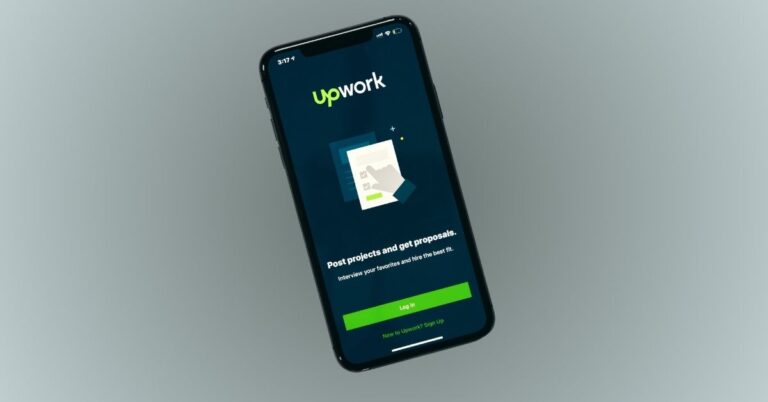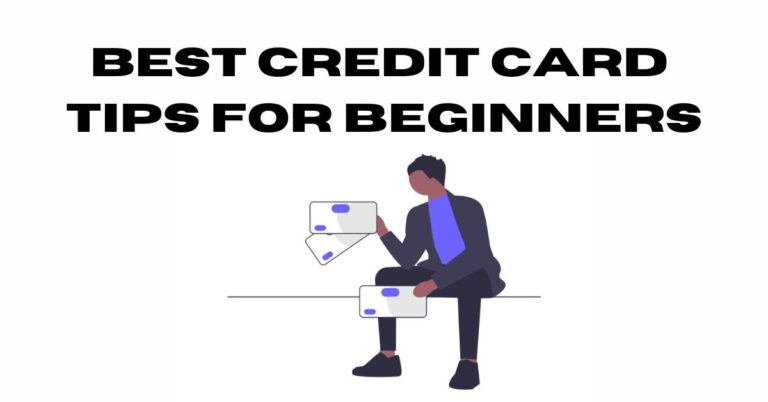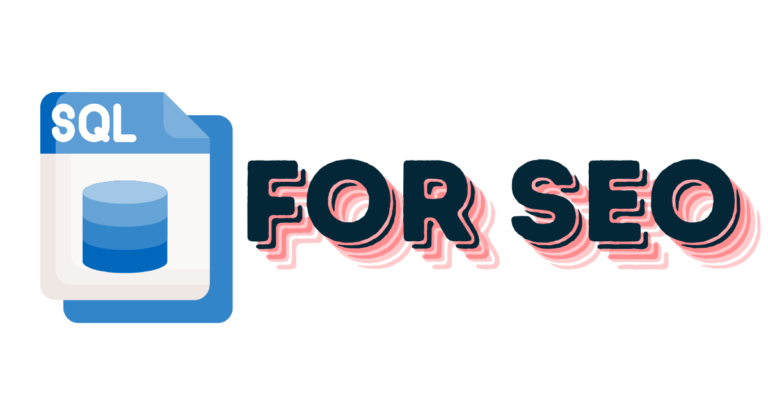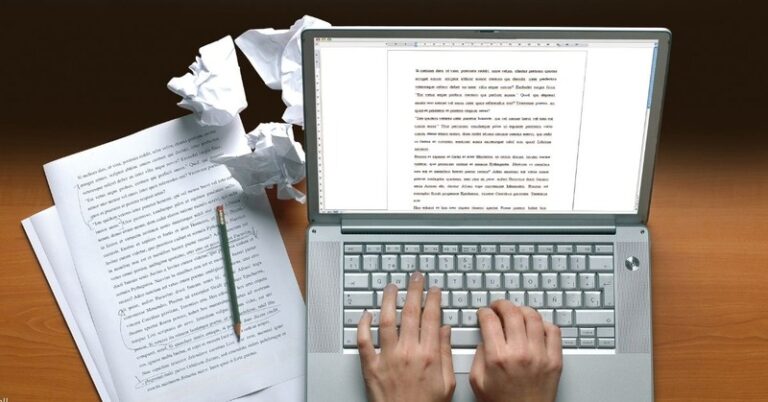Graphic Design Interview Questions + Answers in 2024
Landing a graphic design job interview can be as exhilarating as it is daunting. You’ve polished your portfolio, tailored your resume, and maybe you’ve even rehearsed some key answers.
But as the interview date looms closer, that mix of excitement and nerves begins to peak.
Whether you’re a fresh-faced graduate stepping into the professional design realm for the first time or an experienced designer eyeing a new opportunity, the right preparation is crucial.
It’s not just about showing off your technical prowess; it’s about demonstrating how you think, solve problems, and communicate your ideas.
This guide will walk you through typical graphic design interview questions, helping you prepare to express your creativity and stand out as a candidate.
What Questions are Asked in a Graphic Design Interview?
The questions range from asking about the software you use, to how you implement color theory, up to your experience with redesigning a company’s logo.
All of these are covered in the list below:
1. What software are you most comfortable using for graphic design?
This question helps interviewers gauge your technical proficiency and familiarity with the tools commonly used in the industry.
It also provides insight into how you might integrate into their existing workflow.
When answering, highlight the software you are most skilled in, discuss your experience with these tools, and if possible, mention how you’ve used them in past projects to solve design problems.
How to Answer
“I am most comfortable using Adobe Creative Suite, specifically Photoshop, Illustrator, and InDesign. My proficiency with these tools comes from over five years of experience in both freelance and agency settings.
For instance, in my previous role at [Company Name], I used Illustrator to create vector graphics that improved our campaign’s visual consistency by 30%. I’m also familiar with Sketch and Figma, which I’ve used for UI/UX design projects.”
2. Can you explain the difference between RGB and CMYK color models?
Understanding the difference between RGB and CMYK is fundamental for any graphic designer, as it affects how your work will look on different mediums.
This question tests your technical knowledge and your ability to apply this knowledge in practical design scenarios.
Explain the technical differences and when to use each model.
How to Answer
“RGB and CMYK are both color models used in graphic design but for different purposes. RGB, which stands for Red, Green, and Blue, is an additive color model used for digital displays like computers and TVs.
It combines these three colors at varying intensities to produce a broad spectrum of colors. On the other hand, CMYK stands for Cyan, Magenta, Yellow, and Key (Black) and is a subtractive color model used in print. It mixes these inks to absorb light rather than emit it.
For example, when designing for web, I use RGB to ensure colors will appear vibrant on screen, whereas for anything that will be printed, I switch to CMYK to ensure color accuracy in the final prints.”
3. What is a mood board and how do you use it in your projects?
Mood boards are essential tools in graphic design for developing a visual style or theme.
This question explores your creative process and how you communicate conceptual ideas both internally with your team and externally with clients.
Describe what a mood board is and how you utilize it to solidify design concepts and ensure alignment with project goals.
How to Answer
“A mood board is a collection of visual materials that conveys the overall ‘mood’ of a project.
It can include images, color palettes, typography, and other design elements. I use mood boards at the beginning of the design process to establish a clear visual direction and ensure alignment with the client’s vision.
For instance, for a recent branding project, I created a digital mood board that combined color schemes, potential logos, and imagery that reflected the brand’s ethos, which helped streamline the decision-making process and set a cohesive tone for the project.”
4. How do you manage your files and layers in graphic design software?
File and layer management is crucial for efficient workflow and collaboration in graphic design.
This question assesses your organizational skills and your ability to handle complex projects effectively.
Discuss your approach to organizing your workspace, naming layers, and maintaining version control.
How to Answer
“I maintain a highly organized layer and file management system to streamline my workflow and collaboration.
I use descriptive naming conventions for layers and group them logically to make adjustments easier and prevent errors. I also use version control practices, such as saving incremental versions and using cloud storage for backups.
This approach not only speeds up my work but also makes it easier for other team members to understand my files, ensuring seamless collaboration.”
5. What does typography mean to you, and why is it important?
Typography is a fundamental element of graphic design that can greatly influence the readability and mood of a project.
This question reveals your appreciation for the subtleties of design and your understanding of how typography can affect communication.
Express your personal view on typography and its role in design.
How to Answer
“To me, typography is not just about choosing fonts but about setting the tone and ensuring the legibility of the content. It’s crucial for effective communication as it influences how information is perceived.
For example, in a recent project, I selected a serif font for a luxury brand to convey elegance and tradition, while for a tech startup, I chose a clean, sans-serif font to reflect modernity and innovation.
Good typography enhances the user experience by making information accessible and engaging.”
6. Describe the basic principles of design like balance and alignment.
Understanding the basic principles of design such as balance and alignment is essential for creating visually appealing and effective designs.
This question tests your foundational knowledge and your ability to apply these principles in practical scenarios.
Discuss the importance of each principle and how you use them to enhance the aesthetics and functionality of your designs.
How to Answer
“Balance and alignment are critical for creating visually stable and aesthetically pleasing designs.
Balance refers to the distribution of visual weight in a design, which can be symmetrical or asymmetrical, to create harmony and structure. Alignment refers to lining up text and graphics to ensure a clean, cohesive, and easy-to-navigate composition.
For example, in a recent brochure design, I used symmetrical balance to create a formal and dignified look, and precise alignment to enhance readability and flow of information.”
7. How do you incorporate feedback into your design process?
Feedback is a crucial part of the design process, impacting the final outcome significantly.
This question assesses how well you collaborate with others and integrate suggestions to refine your designs.
Share your approach to receiving, evaluating, and applying feedback effectively.
How to Answer
“Incorporating feedback is essential for improving and finalizing designs. I actively seek feedback at various stages of the design process, using it as a constructive tool to enhance the project.
I ensure clear communication with stakeholders to understand their perspectives and needs, then prioritize this input based on the project’s goals.
For instance, during a recent website redesign, I iterated the layout several times based on user testing feedback, which significantly improved the site’s usability and user satisfaction.”
8. What role does a logo play in a brand’s identity?
A logo is often the most recognizable element of a brand’s identity. This question explores your understanding of branding and how you approach logo design strategically.
Explain the multifaceted roles of a logo in building brand identity, recognition, and loyalty.
How to Answer
“A logo plays a pivotal role in a brand’s identity as it is often the first point of interaction for potential customers.
It encapsulates the company’s values, tone, and essence in a single visual element, making it crucial for brand recognition and recall. A well-designed logo should be memorable, scalable, and adaptable to various media.
For example, when I redesigned the logo for [Brand Name], I focused on creating a simple yet distinctive design that communicates the brand’s innovative approach to technology, which helped improve their market presence and customer recognition.”
9. Explain the concept of contrast in design.
Contrast is a powerful design principle that helps in drawing attention and guiding viewers through a design.
This question tests your ability to use contrast effectively to enhance both aesthetics and function.
Describe what contrast is and how you leverage it in your designs to improve user engagement and readability.
How to Answer
“Contrast involves using opposing elements such as color, size, and shape to highlight differences and focal points in a design.
It is crucial for capturing attention and creating visual interest. In practice, I use contrast to enhance readability and emphasize key areas, such as using a bold color for call-to-action buttons or varying font sizes to establish a hierarchy of information.
For example, in a campaign poster, I used a high contrast color scheme to make the main message stand out, significantly increasing viewer engagement.”
10. How do you stay updated with the latest design trends and technologies?
Staying updated with the latest trends and technologies is vital in the ever-evolving field of graphic design.
This question assesses your commitment to professional growth and your ability to adapt to new tools and trends.
Discuss the resources you use and how you apply your learning to stay ahead in the field.
How to Answer
“I stay updated with the latest design trends and technologies by regularly reading industry blogs, attending webinars, and participating in professional workshops.
I also follow leading designers on social media and subscribe to design publications like ‘Adobe Create’ and ‘AIGA Eye on Design’. This continuous learning helps me keep my skills sharp and my designs innovative.
For instance, I recently integrated augmented reality into a promotional project after learning about it through an online course, significantly enhancing the user interaction with the brand.”
11. Describe a project where you applied color theory effectively.
Color theory is crucial in graphic design as it influences mood, conveys messages, and affects aesthetics.
This question aims to assess your understanding of color psychology and your ability to apply this knowledge practically.
Discuss how you chose a color palette based on the project’s goals and the emotions or actions you wanted to evoke.
How to Answer
“In a marketing campaign for a health and wellness brand, I applied color theory to evoke calmness and trust.
I chose a palette of soft blues and greens, colors that are often associated with health and tranquility.
This choice was strategic to align with the brand’s identity of promoting well-being.
The feedback from the client and the target audience was overwhelmingly positive, with increased engagement levels indicating the effectiveness of the color choices in conveying the right message.”
12. How do you ensure your designs are user-friendly?
User-friendliness is a key factor in design that affects how effectively a user interacts with the end product.
This question tests your ability to empathize with users and apply principles of usability in your designs.
Share specific strategies you use, like user testing, accessibility standards, and responsive design, to create intuitive and accessible designs.
How to Answer
“To ensure my designs are user-friendly, I focus on usability, accessibility, and responsiveness.
I conduct user testing sessions to gather feedback and make iterative improvements based on real user interactions. I also adhere to accessibility standards to ensure that all users, including those with disabilities, can navigate and understand my designs easily.
For instance, for a recent web project, I implemented a responsive design that adjusts smoothly across different devices, enhancing usability and user satisfaction.”
13. Discuss a time you worked under a tight deadline. How did you manage it?
Working under tight deadlines tests your time management skills and your ability to deliver quality work under pressure.
This question seeks insights into your organizational skills and prioritization methods. Explain how you managed your time, resources, and client expectations to meet the deadline effectively.
How to Answer
During a product launch campaign, I was tasked with designing several key visual elements within a tight one-week deadline.
To manage this, I prioritized tasks based on their impact and deadlines, communicated regularly with my team for support, and kept the client updated on progress to manage expectations.
By breaking down the project into manageable tasks and using efficient tools like design templates and shortcuts, I delivered the designs on time without compromising quality.”
14. Explain the golden ratio and its relevance in design.
The golden ratio is a mathematical ratio found in nature that is aesthetically pleasing.
This question tests your knowledge of design principles and your ability to apply them to create balanced and visually appealing designs.
Describe what the golden ratio is and how it can be used to enhance compositions in graphic design.
How to Answer
“The golden ratio, approximately 1:1.618, is a proportion known for its aesthetic harmony. In design, it can be applied to layout, typography, and imagery to create natural balance and focus.
For example, I often use the golden ratio to determine the sizing of text and objects, or to place key elements in a layout to capture the viewer’s attention naturally.
This method was particularly effective in a brochure design where I used it to balance text and images, resulting in a fluid and engaging layout.”
15. What is a linked layer and its usefulness in design projects?
Linked layers are a feature in graphic design software that facilitates workflow efficiency and consistency across multiple documents.
This question evaluates your technical proficiency and understanding of advanced software features.
Explain what linked layers are and how they can be used to maintain consistency and streamline updates in design projects.
How to Answer
“Linked layers in software like Adobe Photoshop and Illustrator refer to layers that are connected across different files.
When a linked layer is updated in one file, the changes automatically apply to all instances of that layer in other documents. This is incredibly useful for maintaining consistency in elements like logos or headers across multiple project files.
For instance, in a branding project, I used linked layers for the client’s logo, ensuring that any updates to the logo were instantly reflected in all marketing materials, saving time and reducing errors.”
16, Discuss how you handle client disagreements regarding a design.
Handling client disagreements effectively is crucial for maintaining professional relationships and ensuring project success.
This question tests your communication skills and problem-solving abilities.
Discuss your approach to understanding client concerns, providing solutions, and how you negotiate or find middle ground without compromising the design’s integrity.
How to Answer
“When facing client disagreements, I first ensure to understand their concerns fully by listening actively and asking clarifying questions.
I explain the design choices based on design principles and how they meet the project’s objectives. If disagreements persist, I offer alternative solutions or adjustments while keeping the project’s goals in focus.
For example, in a recent branding project, a client was unsure about the color palette. I presented a mockup showing the palette in various real-world applications, which helped them visualize the outcome and ultimately agree with the choice.”
17. What are the different types of brochures you can design?
Knowledge of different brochure formats is essential for a graphic designer, as it affects how information is presented and received.
This question examines your familiarity with various design options and your ability to choose the appropriate format for specific client needs.
List and describe several types of brochures, explaining when and why each might be used.
How to Answer
“There are several types of brochures, each suited for different purposes.
The most common types include bi-fold, tri-fold, gate-fold, z-fold, and accordion-fold. Bi-fold brochures are simple and used for general purposes.
Tri-folds are popular for marketing due to their compact size and clear segmentation. Gate-folds provide a dramatic presentation, suitable for high-end marketing. Z-folds unfold in a zig-zag pattern and are good for step-by-step presentations. Accordion-folds allow for extensive information without feeling overwhelming.
Choosing the right type depends on the amount of information, the intended use, and the client’s engagement strategy.”
18. How do you differentiate between serif and sans-serif fonts?
Understanding the differences between serif and sans-serif fonts is fundamental in typography and impacts readability and viewer perception.
This question checks your basic typographical knowledge and your ability to apply it appropriately based on the design context. Explain the characteristics of each and their typical applications.
How to Answer
“Serif fonts have small lines or decorative strokes at the ends of their letters, which originated from traditional print media.
They are often used in formal or traditional contexts like books or newspapers to enhance readability in print.
Examples include Times New Roman and Garamond. Sans-serif fonts lack these strokes, offering a cleaner, more modern appearance. They are commonly used in digital media for clarity and simplicity. Examples include Helvetica and Arial.
Choosing between them depends on the project’s medium, purpose, and audience preferences.”
19. Can you describe a design project that challenged you the most?
This question aims to assess your problem-solving skills, creativity, and resilience under pressure. It provides insight into your ability to tackle complex design challenges.
Describe a particularly challenging project, the obstacles you faced, and how you overcame them to achieve success.
How to Answer
“One of the most challenging projects I faced was designing an interactive mobile app for a large retail company.
The main challenge was integrating a vast amount of product data into a user-friendly interface without compromising performance. I conducted extensive user research to understand key functionalities needed and collaborated closely with developers to optimize the design for performance.
Through iterative testing and feedback, we successfully launched an app that balanced aesthetic appeal with functionality, significantly improving user engagement and sales.”
20. How do you measure the success of your design projects?
Measuring the success of design projects is crucial for evaluating effectiveness and guiding future improvements.
This question tests your ability to quantify the impact of your designs and understand client objectives. Discuss the metrics and feedback mechanisms you use to evaluate design success.
How to Answer
“I measure the success of my design projects by a combination of client satisfaction, user engagement metrics, and specific project goals.
For instance, in digital projects, I look at user interaction data, such as click-through rates, time spent on page, and conversion rates. For print, I might assess feedback through client surveys and the response from the target audience.
Additionally, I seek direct feedback from the client and the end-users to understand their perspectives on the design’s effectiveness and areas for improvement.”
21. How would you redesign our company’s logo to enhance its effectiveness?
This question evaluates your ability to critically assess and improve existing designs while aligning with the company’s branding strategy.
Discuss how you would approach the redesign with a focus on enhancing recognition, relevance, and resonance with the target audience.
How to Answer
“To redesign your company’s logo effectively, I would start by analyzing the current logo and brand strategy, including customer feedback and market position. I would look to simplify the design to ensure it’s scalable and versatile across all media.
For example, if the current logo is complex, I would streamline elements to maintain brand identity while ensuring it’s functional in both large formats and as a small app icon. I would also consider modernizing the color palette and typography to rejuvenate the brand while staying true to its roots.
This process would be done in close collaboration with your team to ensure it aligns perfectly with the company’s vision and objectives.”
22. Describe your process for creating a comprehensive brand identity.
Creating a comprehensive brand identity is crucial for a cohesive and effective marketing strategy.
This question probes your strategic and creative approach to brand development. Detail your step-by-step process, including research, design, and implementation phases.
How to Answer
“My process for creating a comprehensive brand identity starts with extensive research to understand the brand’s core values, target audience, and competitive landscape.
I then develop a visual identity that includes a logo, color palette, typography, and imagery that reflect these findings.
I create style guides to ensure consistency and conduct workshops with the client to ensure alignment.
For example, for a recent startup, I developed their identity from scratch by closely working with the founders to encapsulate their vision, which helped them gain a strong foothold in a competitive market.”
23. Discuss the importance of brand consistency and how you maintain it across different platforms.
Brand consistency strengthens brand recognition and customer trust. This question tests your understanding of branding principles and your ability to apply them across various media.
Explain the significance of consistency and how you achieve it in your projects.
How to Answer
“Brand consistency is vital for building trust and recognition.
I maintain consistency across platforms by developing comprehensive brand guidelines that cover all aspects of the brand’s visual and verbal identity.
These guidelines include specific instructions on logo usage, color schemes, typography, and tone of voice.
For instance, in managing a brand overhaul for a client, I created detailed guidelines and worked with their marketing team to implement them across digital and print media, ensuring that every touchpoint conveyed a unified brand message.”
24. How do you integrate user experience considerations into your web design projects?
Integrating user experience is essential for designing effective and engaging websites.
This question assesses your ability to create designs that are not only visually appealing but also functional and user-friendly.
Share your methods for incorporating UX principles into your web design work.
How to Answer
“I integrate user experience considerations into web design projects by starting with user research to understand the needs and behaviors of the target audience.
I use this data to create wireframes and prototypes that focus on ease of navigation, accessibility, and engaging content.
For example, for an e-commerce site, I designed a streamlined checkout process that reduced clicks to purchase by 50%, significantly enhancing the user experience and increasing conversion rates.”
25. What strategies do you use to ensure a design is both innovative and aligns with client objectives?
Balancing innovation with client objectives is key to successful design outcomes.
This question explores your creative process and how you ensure your designs meet business goals. Describe your approach to innovation and how you align it with strategic objectives.
How to Answer
“To ensure my designs are innovative while aligning with client objectives, I stay abreast of the latest design trends and technologies, applying them in ways that enhance the project’s goals.
I collaborate closely with clients to understand their vision and objectives, then brainstorm and prototype innovative solutions that meet these needs.
For instance, in a branding project for a tech company, I used augmented reality in their promotional materials, which was innovative and significantly increased engagement by providing users with a unique interactive experience that also clearly communicated the brand’s cutting-edge identity.”
26. Discuss a complex infographic you designed. What approach did you take to present the data clearly?
This question assesses your ability to distill complex information into an easily digestible visual format.
It tests your analytical skills and creativity in data visualization.
Describe your methodology for organizing information, choosing the right types of charts or visuals, and ensuring the infographic is both informative and engaging.
How to Answer
“For a complex infographic on climate change impacts, I started by thoroughly understanding the data to determine the key messages.
I used a hierarchical layout to guide the viewer through the information logically.
For clarity, I chose color-coded bar graphs and pie charts to represent different data sets, and incorporated icons to visually summarize concepts. I also used tooltips and interactive elements to allow users to explore deeper layers of data.
This approach helped make the complex data accessible and engaging for a broad audience.”
27. Explain how you would use JavaScript to enhance design interactivity on a website.
This question explores your technical skills in enhancing user experience through interactivity.
It gauges your ability to integrate programming into design to create dynamic and responsive websites.
Discuss specific JavaScript functionalities you might use to enhance interactivity, such as animations, interactive forms, or dynamic content updates.
How to Answer
“Using JavaScript, I can enhance website interactivity in several ways.
For example, I would implement on-scroll animations to make the site more visually engaging. JavaScript can also be used to create interactive forms that provide instant feedback to users, improving usability.
Additionally, I could use AJAX for dynamically updating content without reloading the page, providing a smoother and faster user experience.
These features can significantly enhance user engagement and satisfaction with the website.”
28. Describe a time when a design you created did not work as intended. How did you respond?
This question tests your problem-solving skills and your ability to adapt and learn from failures. It seeks to understand how you handle setbacks and apply feedback.
Describe a specific instance where your design fell short and the steps you took to rectify the situation.
How to Answer
“In a project aimed at redesigning a client’s website, the initial design was not well-received due to its complexity and navigation difficulties.
I responded by gathering detailed feedback from the client and the end-users to understand their concerns. Based on this feedback, I simplified the design, improved the navigation structure, and made it more intuitive. I then conducted a series of user tests to ensure the new design met user needs effectively.
This iterative process helped salvage the project and ultimately satisfied the client.”
29. How do you approach designing for a diverse global audience?
Designing for a global audience requires sensitivity to cultural nuances and accessibility standards.
This question examines your ability to create designs that are inclusive and resonate across different cultures.
Explain how you research and incorporate diverse cultural elements and ensure accessibility in your designs.
How to Answer
“When designing for a diverse global audience, I prioritize inclusivity and accessibility.
I conduct extensive research to understand cultural preferences, colors, and symbols that resonate with different groups. I ensure the design is accessible by adhering to international web accessibility standards.
For instance, when working on a global marketing campaign, I used universally recognized icons and avoided culturally specific imagery to ensure the message was clear and relatable to a broad audience.”
30. What is your experience with motion graphics and how have you implemented it in your projects?
Motion graphics can significantly enhance the visual appeal and engagement of digital content.
This question tests your technical skills and creativity in integrating motion into design projects.
Discuss your experience with motion graphics tools and specific projects where you effectively used motion to convey messages or enhance storytelling.
How to Answer
“I have extensive experience using Adobe After Effects and Cinema 4D to create motion graphics that bring static images to life.
For example, in a promotional video for a tech startup, I integrated motion graphics to explain complex services in a simple, engaging way.
The animation highlighted key features of the service with dynamic visuals and transitions, which helped increase viewer understanding and engagement rates significantly.”
How to Prepare for a Graphic Design Interview
Preparing effectively for a graphic design interview can greatly enhance your confidence and increase your chances of success. Here are the top 5 tips to get you ready:
Research the Company
Dig deep into the company’s culture, their goals, and what they’ve been up to lately. Check out their website, social media feeds, and any news articles you can find. This isn’t just busy work—it helps you tweak your answers so they hit just the right note during your interview.
Polish Your Portfolio
Your portfolio is basically your golden ticket. Make sure it’s loaded with your best work and reflects a wide range of skills. Keep both a digital version and a physical copy if possible, and know each project inside out so you can talk about your design decisions and how they panned out.
Prepare Your Personal Brand
Yep, you’re a brand too. Whip up a cool logo or monogram for yourself and slap it on everything—portfolio, resume, business cards. Speaking of business cards, don’t just make them; design them to impress. It’s your chance to show off your skills in a pocket-sized format.
Practice Your Pitch
Be ready to talk shop about your designs and how they line up with the company’s needs. Practice makes perfect, so rehearse how you’ll explain your projects using the STAR method (Situation, Task, Action, Result) to keep your answers crisp and to the point. Be prepared to chat about how you handle feedback and iterate on your designs, too.
Ask Insightful Questions
Come up with three to five killer questions to ask at the end of the interview. This shows you’re genuinely interested and not just going through the motions. Maybe ask about how they handle design feedback, what the team’s like, or how they overcame a recent challenge. It’s a great way to show you’re already thinking about how you can fit in and add value.
Conclusion
Juan Remote Work, as a brand, aims to help you pass your graphic design interview with flying colors.
To read more topics similar to this one, consider hopping over to our Interview Questions or Blogs sections where we’ve covered topics like ‘Social Media Interview Questions,’ ‘Copywriter Interview Questions,’ and a whole lot more.
So to sum it up – walking into your interview prepared not only helps you feel more confident but also demonstrates to potential employers that you’re thorough and enthusiastic about the opportunity.
Make sure to tailor your preparation to showcase yourself as a well-rounded candidate, ready to take on the challenges of the role.
We hope that we’ve helped you with this topic, and we hope that we’ll see you in our next article.
Take care!
FAQs
What should I include in my digital portfolio for a graphic design interview?
Think of your digital portfolio like your greatest hits album—it should show off your best and most diverse work. Include projects that showcase different skills, such as logo design, web layouts, or animation. For each piece, give a quick rundown: what was the goal, how did you tackle it, what tools did you use, and what was the outcome? Keep everything tidy and easy to click through; you want your work to shine without any distractions.
How can I handle criticism during a graphic design interview?
Criticism can be tough but try to see it as a gift. Listen closely, stay open to feedback, and show how you can tweak your designs for the better. Share how feedback has helped you grow in the past and how it sharpens your work. This not only shows that you’re professional but also that you’re always looking to improve.
What are some common mistakes to avoid during a graphic design interview?
First off, make sure you know the company like the back of your hand. A messy or confusing portfolio is a big no-no, and you should be able to explain why you made certain design choices. Keep the chat about past bosses or projects positive, and make sure you can clearly talk about what you bring to the table. Also, don’t forget to prepare some smart questions for your interviewer—it shows you’re serious about the role.
How can I demonstrate my design thinking during an interview?
Show them how you think, not just what you create. Talk about how you approach a new project, the way you research and brainstorm, and how you refine your ideas based on feedback. Pick a couple of projects from your portfolio and walk them through your process from start to finish, explaining how each decision was aimed at nailing the project’s goals.
How do I negotiate my salary in a graphic design position during the interview?
It’s all about timing and knowing your worth. Do some homework ahead of time to figure out what the going rate is for the job you’re after. If the topic of money comes up, keep it professional and back up your request with reasons why you’re worth the figure you’re aiming for. If their first offer seems low, don’t be shy about asking for more—just be sure to do it respectfully and clearly explain why you deserve it.
